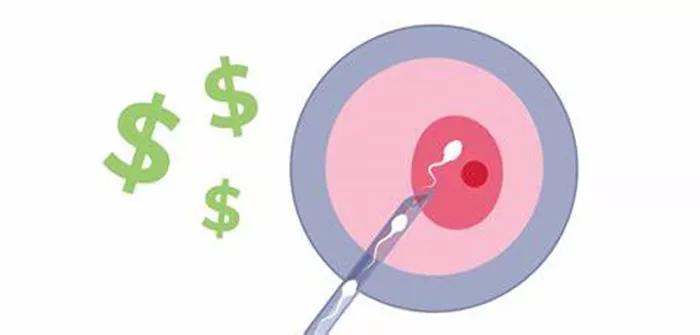The journey of conception is a remarkable process that involves numerous stages. One crucial step is the implantation of the embryo into the uterine lining. This event marks the beginning of pregnancy. However, not all embryos successfully implant. Understanding what happens to an embryo that does not implant can provide insight into reproductive health and fertility.
The Implantation Process
Understanding Implantation
Implantation is the process by which a fertilized egg, known as a blastocyst, attaches itself to the lining of the uterus. This usually occurs about six to ten days after fertilization. The uterine lining, or endometrium, thickens in preparation for this event, providing the necessary nutrients for the developing embryo.
The Role of Hormones
Hormones play a significant role during implantation. After fertilization, the developing embryo produces human chorionic gonadotropin (hCG). This hormone signals the body to maintain the uterine lining and prevents menstruation. Estrogen and progesterone levels also rise, further supporting the implantation process.
Reasons for Non-Implantation
Quality of the Embryo
Not all embryos are genetically viable. Abnormalities in the embryo’s genetic material can lead to developmental issues. If an embryo has chromosomal abnormalities, it may not have the capability to implant successfully. Research indicates that a significant percentage of embryos formed during in vitro fertilization (IVF) have chromosomal abnormalities.
Uterine Environment
The uterine environment must be suitable for implantation. Factors such as hormonal balance, endometrial thickness, and overall uterine health are essential. Conditions such as uterine fibroids, polyps, or abnormalities in the uterine shape can hinder the implantation process. Additionally, inflammation or infections in the uterus can negatively affect embryo implantation.
Timing of Implantation
Timing is another crucial factor. If an embryo arrives at the uterus too late or too early, the chances of successful implantation decrease. The timing of ovulation and fertilization must align with the preparation of the uterine lining for optimal success.
What Happens to an Unimplanted Embryo?
Disintegration of the Embryo
When an embryo fails to implant, it typically does not survive. After a few days, the unimplanted embryo undergoes a process known as disintegration. This is a natural occurrence where the cells of the embryo break down. The blastocyst may simply dissolve, losing its structure and viability.
Resorption by the Body
Once the embryo disintegrates, the body absorbs its remnants. The cells break down into smaller components that can be reabsorbed into the body. This process is part of the body’s natural ability to maintain homeostasis and eliminate any non-viable cells.
Hormonal Changes
The absence of implantation leads to a decrease in hCG production. As the levels of this hormone drop, the body prepares for menstruation. The uterine lining, which had thickened in anticipation of pregnancy, will shed during the menstrual cycle. This results in the start of a new menstrual cycle, often referred to as the luteal phase.
The Psychological Impact
Emotional Responses
The failure of an embryo to implant can bring about various emotional responses. For couples trying to conceive, the disappointment of a non-implantation can lead to feelings of sadness, frustration, and grief. Understanding that this process is common may help couples cope with their emotions.
Seeking Support
Many couples find it beneficial to seek emotional support during this time. This can include counseling, support groups, or talking with friends and family. Sharing experiences and feelings can help alleviate the emotional burden associated with unsuccessful implantation.
Addressing Implantation Issues
Consulting a Healthcare Provider
Couples facing repeated implantation failures may benefit from consulting a healthcare provider specializing in reproductive health. A thorough evaluation can help identify underlying issues that may be impacting implantation.
Fertility Treatments
For those struggling with implantation, various fertility treatments may be recommended. These can include lifestyle modifications, hormonal treatments, or advanced reproductive technologies such as in vitro fertilization (IVF). In some cases, preimplantation genetic testing can identify embryos with chromosomal abnormalities, allowing for the selection of viable embryos for transfer.
Understanding the Bigger Picture
Fertility Awareness
Understanding what happens when an embryo does not implant is essential for those navigating the complexities of conception. Many couples may experience unsuccessful attempts before achieving a successful pregnancy. Awareness of this process can help couples set realistic expectations and foster resilience.
The Role of Lifestyle Factors
Lifestyle factors can also play a role in implantation success. Maintaining a healthy diet, managing stress levels, and avoiding harmful substances such as tobacco and excessive alcohol can positively influence reproductive health. Furthermore, regular exercise can improve overall well-being, which may also enhance fertility.
Advancements in Research
Ongoing research into reproductive health continues to shed light on the complexities of implantation. Scientists are exploring the molecular and genetic factors that influence embryo viability and uterine receptivity. As our understanding deepens, new treatments and interventions will likely emerge to assist couples facing implantation challenges.
Conclusion
The journey of an embryo is intricate and can take unexpected turns. When an embryo does not implant, it typically disintegrates and is reabsorbed by the body. This natural process occurs for various reasons, including genetic abnormalities and an unsuitable uterine environment. Understanding this aspect of conception can help couples navigate their fertility journey with greater insight. For those facing difficulties, seeking professional support and exploring available options can provide a path forward in their desire to conceive. Knowledge is power, and understanding the nuances of implantation can help couples make informed decisions regarding their reproductive health.
Related topics:



























